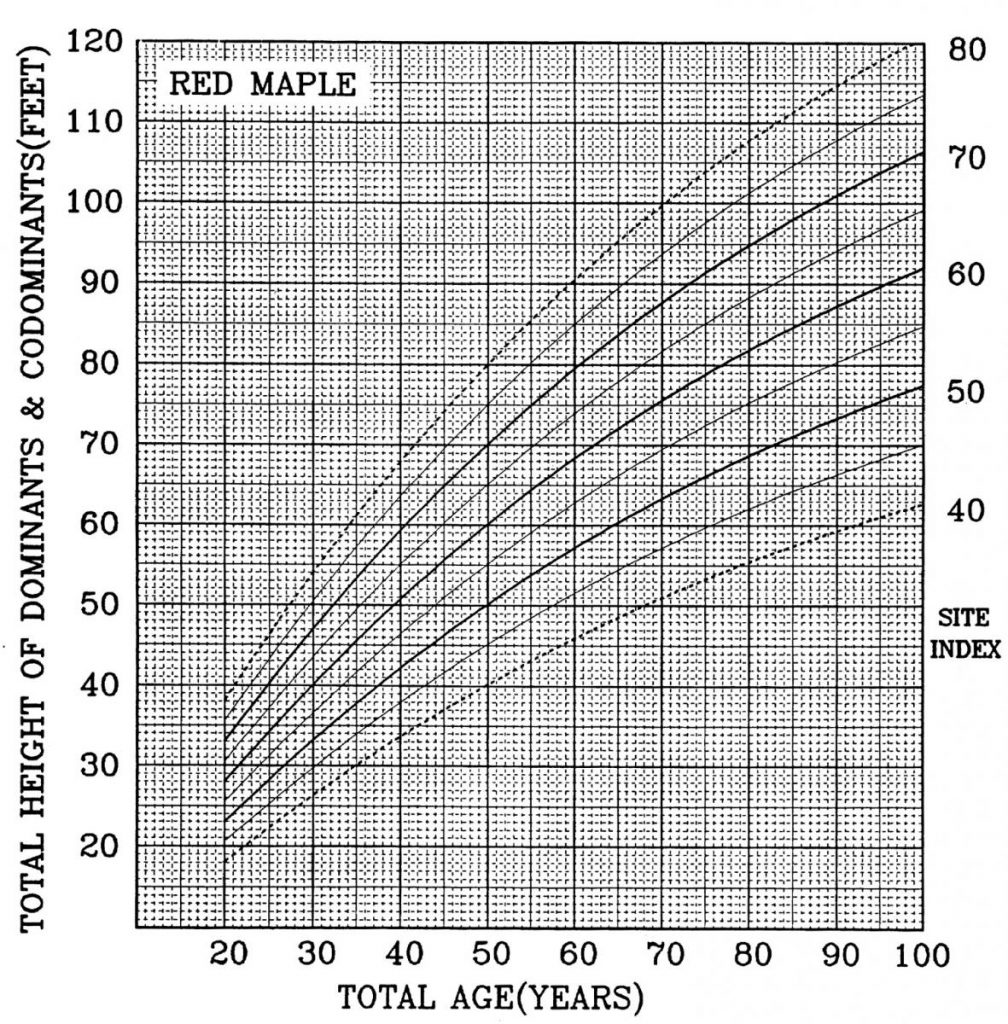In previous posts, we recommended that landowners get out into their woods to keep an eye on any changes that might be taking place, whether that be changes to the health of your trees or boundary problems. We also suggested you keep track of physical changes to your trees by watching them grow and change over time. First we gave you some tools to identify the trees in your woods. This month’s post will introduce ways you can measure the growth of individual trees.
You can measure the growth of individual trees over time by measuring their diameter. Many of us learned to count the rings of a tree to determine how old they are. The other secret in the rings of our trees is how wide they are. Generally, healthy, not crowded trees will put on more growth in diameter over time; thus, the rings will be wider when they are healthy. If you are astute, you may be asking how in the heck you measure the diameter of solid wood. That is where a handy tool comes into play, called the diameter tape. With this tool, you are technically using the circumference of the tree, and the number on the tape has markings that indicate the diameter (circumference divided by Pi (3.14)). You can purchase a diameter tape (D-tape) from forestry suppliers, or you can make your own using a simple length of rope or ribbon using the method shown in this publication . Trees tend to grow irregularly at the base, so to determine a more accurate measure of diameter, foresters will measure the diameter of the tree at 4.5 feet above the ground. When you record the diameter of trees, you can follow the growth of those trees over time, and you can calculate other important measures of your woods. As a reminder, healthy trees will grow faster (and fatter) in diameter each year than trees that are crowded and unhealthy.

Diameter is more important to know when it comes to tree health and stocking, while height is used to calculate volume and site index. If you know the diameter and height of a tree, you can estimate the volume of wood that is available when it is time to sell trees for pulp or timber. Another tool a forester may use is called the Biltmore or cruiser’s stick. It can be used to measure diameter, and it has a tool to measure height. A more accurate (and much more expensive) tool to measure height is called a clinometer. Traditionally wood is sold in 8 or 16 foot lengths, thus why the stick just tells you how many logs are in the tree rather than the actual height. Measuring the height of a tree, whether using the stick or a clinometer, involves some calculations since you have to walk a specific distance from the tree and dust off your trigonometry. In the end, you would use a table to line up diameter and height to determine the cords or board feet of wood in an individual tree.

Site index is another calculation that involves the height of a tree; it is a mathematical way to determine which trees are more productive in an individual forest parcel. There are a lot of factors that go into determining which trees grow best where: soil type, geography, climate, and so on. So a forester can determine this using the trees that are growing there. Each species of tree grows at a known rate; if a tree is shorter than expected, it isn’t a good site, while a tree growing as expected or taller indicates a good site. To determine this, you need the site index curves for the various trees in your woods, then you use the height and age of a tree to plot its growth. Based on the variety of species in your woods, you can determine which ones are best suited and therefore grow the best in your parcel of land.

It is fun to watch individual trees growing over time, and would be a good activity to do with children or grandchildren over the years. However, as the saying goes, you can’t see the forest for the trees. One tree won’t give you a good picture of how your woods are growing and functioning as a whole. In our next measurement article, we’ll get at the big picture: stocking and density of a forest.
